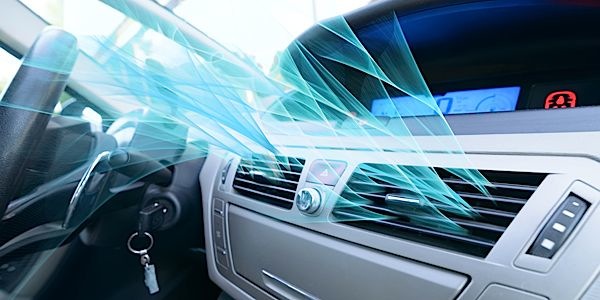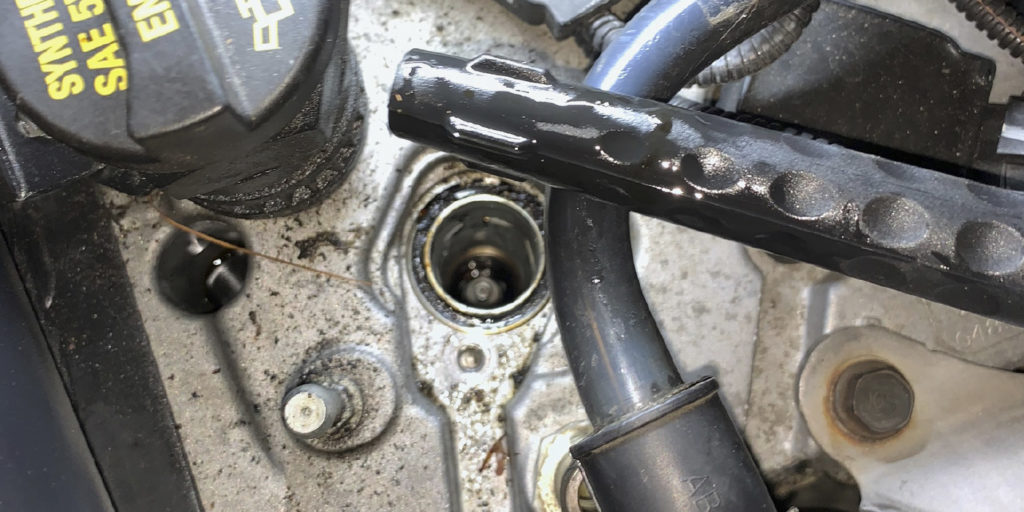Handling means different things to different types of drivers. To most people, a vehicle that handles well is stable and predictable. In other words, there are no surprises and the suspension meets the driver’s expectations for normal everyday driving.
Whether the stock suspension and shocks are up to the task depends on the vehicle, how it is driven and the driver’s expectations. Some stock suspensions are up to the task and others are not. And the older a vehicle gets, the greater the effect wear has on the suspension’s ability to control ride and handling. Old worn out parts obviously can’t to the same job as brand new parts.
Popular upgrades include shocks and struts with firmer valving (or adjustable valving), shorter stiffer springs to lower the center of gravity, stiffer sway bars to keep the body flat, and firmer suspension bushings to reduce suspension compliance. The best approach is to install a complete suspension package that incorporates all of these parts and has been engineered to deliver the kind of handling performance the customer expects.
It’s amazing how much a few simple changes can improve a vehicle’s handling characteristics. Firming up the suspension and keeping the body flat reduces roll and allows a vehicle to corner faster than before.
A vehicle’s cornering agility, depends on its ability to resist roll. The better able the suspension is to control roll, the better the vehicle will corner and hold traction as it does so. This makes the vehicle feel more responsive and increases the speed at which it can negotiate turns and twists in the road.
Roll depends on a number of variables including suspension geometry, roll axis, center of gravity, wheelbase, track width, etc., about which little or nothing can be done without making extensive modifications to a vehicle. But several variables that can be altered include sway bars, shocks, struts and springs.
SWAY BARS
The purpose of a sway bar, stabilizer bar or anti-roll bar is to reduce body roll when cornering. A sway bar is nothing more than a lateral (sideways) torsion bar connected crosswise between the right and left wheels on either the front or rear suspension. It ties the right and left suspensions together in such a way that resistance is created when either side tries to move independently of the other.
As long as both sides of the suspension move up or down in unison (as when crossing a speed bump), the sway bar does nothing and is just along for the ride. But when one side tries to move in the opposite direction of the other (as when cornering sharply or when one wheel is swallowed up by a pothole in the road), it twists the sway bar. This twisting action creates a resistance that attempts to keep both sides of the suspension in sync with one another – which minimizes body roll without noticeably affecting ride harshness.
Anybody who’s serious about handling performance is obviously a hot prospect for upgrading their sway bars. Even so, the potential applications for this type of product goes far beyond sports cars and performance luxury sedans.
Any vehicle that has a handling problem (instability in strong cross winds or excessive body roll when cornering) would be a good prospect for aftermarket sway bars. So too would any vehicle that’s used for towing or hauling loads such as minivans, conversion vans, sport utility vehicles and pickups. Upgrading here would involve adding sway bars where none exist (usually on the rear suspension) and/or replacing the stock sway bars with stiffer ones.
Some aftermarket sway bars are also adjustable, which allows them to be fine tuned to the suspension. This too, can provide much improved handling over a stock setup.
When upgrading sway bars, it’s important to replace both the front and the rear bars with a matched set. The front and rear sway bars have to work together so they’ll provide balanced roll rates.
Another area for improvement is in the links that tie the bars to the lower control arms. Original equipment links are often puny little rods with soft rubber bushings. Rubber bushings tend to be too compliant (soft) to provide responsive roll control. If the stock bushings are shot and need to be replaced anyway, or if the sway bar seems slow to respond, upgrading to firmer plastic urethane bushings would be a good recommendation.
That brings us to pitch, which is the fore and aft rocking motion of the chassis as when braking or accelerating. Sway bars are no help here because pitch takes place in a different plane than roll. Excessive nose dive when braking or tail squat during acceleration are often symptoms of worn shocks or struts, or weak springs. So let’s move on to shocks and struts.
SHOCK THERAPY
Replacement shocks or struts are one of the best upgrades that can be made to any suspension when it comes to improving overall ride control and handling. A good set of shocks (or struts) will give your customer more bang for his ride control buck than other upgrade because the ability to control suspension jounce and rebound is critical in any suspension. Upgrade options here include heavy-duty shocks, gas pressurized shocks and struts, and adjustable shocks and struts.
Though most late model vehicles come factory-equipped with gas pressurized shocks or struts, many OEM dampers are valved more for ride comfort than ride control. Soft valving provides a nice boulevard ride, but the trade-off is reduced body control and more roll — exactly what you don’t want on a vehicle with a high center of gravity like your typical SUV.
According to one shock manufacturer, the valving on their aftermarket replacement shocks is about 15% firmer on compression and rebound than the original shocks to compensate for suspension wear. On their performance shocks, the valving can be much stiffer.
ADJUSTABLE SHOCKS
One thing to keep in mind about performance shocks and struts is that stiffer isn’t necessarily better. What works great on the race track may be too harsh for everyday driving on the street. That’s where adjustable shocks and struts come in handy.
Adjustable shocks are a good choice for “dual-purpose” vehicles that are driven mostly on the street, but used occasionally offroad or for racing or towing. Adjustable shocks allow the driver to dial-in the desired amount of stiffness. By turning an adjustment screw or dial, or rotating the position of the piston rod in the damper, the internal valving is changed to increase or decrease the resistance offered by the shock. The shocks can be set at “normal” for everyday driving, or “firm” or “extra firm” when things get serious. Some aftermarket shocks offer up to eight different settings. There are even aftermarket electronic shocks that allow the driver to alter shock valving on the go like OE electronic suspensions.
SPRINGS
Springs are yet another component that can be replaced to upgrade handing performance. Shorter springs lower a vehicle’s center of gravity, which helps to reduce body roll and improve cornering. There may also be some gains in aerodynamics, too, by positioning the vehicle closer to the ground.
As for installing “hard” or “soft” springs, there are two schools of thought. Shorter springs are usually stiffer springs, perhaps 10 to 15 percent stiffer than stock. A stiffer spring can help prevent bottoming with a lowered suspension, and a stiffer spring will definitely reduce body roll. On the other hand, stiff springs also increase ride harshness. Some customers may not want to trade the comfort of their kidneys for superior handling, so a spring that’s roughly equal to stock stiffness may be best for them.
Another alternative is a variable-rate spring. Coil springs often sag with age, so if the vehicle needs new coils anyway why not recommend upgrading to variable-rate replacement springs?
A variable-rate spring stiffens up as it is compressed, which means it becomes progressively stiffer as the vehicle is loaded. But under light load, it offers bout the same ride as a stock spring. Switching to variable-rate springs can increase a vehicle’s load carrying capacity while reducing rear bumper sag when the vehicle is heavily loaded or is towing a trailer.













